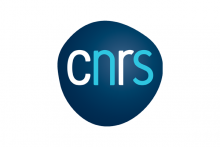
The French National Centre for Scientific Research (CNRS) is a public organisation for scientific and technological research and is under the authority of the French Ministry for Research. CNRS is the largest fundamental research organisation in Europe. Measured by the amount of human and material resources it commits to a great range of disciplines, CNRS is the hub of research activity in France. It is also an important breeding ground for scientific and technological innovation. The main tasks of CNRS are: the development of knowledge, its transfer to and its application in enterprises and all domains contributing to the progress of society, the dissemination of information and of scientific and technical culture to the public, and especially towards young people, the participation in early training and life-long training, training by research, and quality in the research management. CNRS was the first French research organisation to sign the European “Charter of Researcher” in 2005.
The scientists involved in the project are part of the "Laboratoire d'Aérologie”, which is a Joint Research Unit of University between CNRS and the University of Toulouse. The laboratory has a long and well-known experience in the field of atmospheric sciences. The scientific objectives of LA concern the observation, the understanding and the numerical modelling of dynamic, physical and chemical processes controlling the evolution of the atmosphere. The CNRS group has developed several inventories of greenhouse gases and air pollutants, such as MACCity, CAMS-81, ECCAD, GEIA, AMIGO, and IGAC.
CNRS is mainly involved in WP2 Prior and ancillary information where it will provide support on development of global anthropogenic inventories based on their CAMS- GLOB-ANT product and the data available in ECCAD and Copernicus CLMS. In addition, CNRS will establish links with the international AMIGO (Analysis of eMIssions usinG Observations) project of the International Global Atmospheric Chemistry (IGAC) project where uncertainties on emissions are quantified and evaluated, using satellite and ground-based observations.